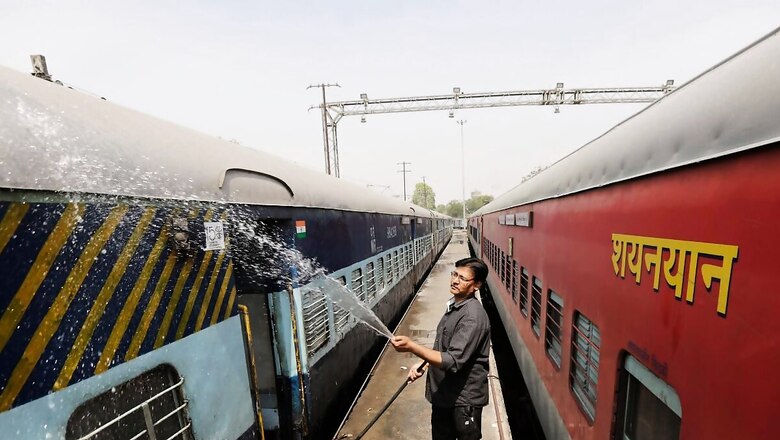
views
Regular track renewals, no unmanned level crossing gates, construction of road overbridges and installation of fire and smoke detection system in AC coaches, among others, improved the safety performance of the railways from 2014-24, compared to the 2004-14 period, according to government data. Data shows that the number of consequential train accidents to 68 per annum (2014-2024), compared to 171 per annum (2004-2014).
How was this made possible? Firstly, the expenditure on safety-related works has been increased 2.5 times, from Rs 70,273 crore in 2004-14, to Rs 1.78 lakh crore during 2014-24. Track renewal expenditure, too, is up 2.33 times, from Rs 47,018 crore in 2004-14 to Rs 1,09,659 crore during 2014-24.
Weld failures have been reduced by 87%, from 3,699 in 2013-14 to 481 in 2023-24. Rail Fractures have been reduced by 85%, from 2,548 in 2013-14 to 383 in 2023-24.
Expenditure on level crossing (LC) elimination has been increased 6.4 times, from Rs 5,726 crore in 2004-14, to Rs 36,699 crore during 2014-24. The number of unmanned level crossing gates came to zero by January 31, 2019, from 8,948 as on 31.03.2014. Construction of road over bridges has increased 2.9 times, from 4,148 during 2004-14 to 11,945 during 2014-24. Expenditure on bridge rehabilitation has increased 2 times, from Rs 3,919 crore during 2004-14 to Rs. 8,008 crore during 2014-24.
Electronic Interlocking (Stations) have increased 3.5 times, from 837 during 2004-14 to 2,964 during 2014-24. Automatic Block Signaling has increased 1.67 times from 1,486 km during 2004-14 to 2,497 km during 2014-24. Fog pass safety devices have increased 219 times, from 90 as on 31.03.14 to 19,742 as on 31.03.24.
Manufacturing of LHB Coaches has increased 15.8 times, from 2,337 during 2004-14 to 36,933 during 2014-24.
Provision of fire and smoke detection system in AC coaches has increased from 0 in 2014 to 19,271 in 2024. The provision of fire extinguishers in Non-AC Coaches increased from 0 in 2014 to 66,840 in 2024.


















Comments
0 comment